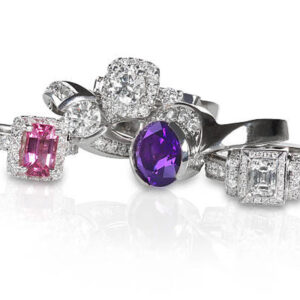Understanding the Factors Influencing the Price of Laboratory-Grown Diamonds
0 comments
SHOP BY STYLE ✧
SHOP BY SHAPE ✧
![]()
![]()
![]()
![]()
![]()
METAL COLOR ✧
WEDDING BANDS
SHOP BY STYLE ✧
![]()
![]()
![]()
SHOP BY STONE ✧
SHOP BY METAL ✧
JEWELRY FOR THE BIG DAY
NECKLACES ✧
EARRINGS ✧
BRACELETS ✧
Engagement ✧
SHOP BY SHAPE ✧
![]()
![]()
![]()
![]()
![]()
![]()
SHOP BY COLOR ✧
SHOP BY CATEGORY✧

SHOP BY CATEGORY✧
SHOP BY OCCASION✧
SHOP BY PRICE✧

Birthstone Jewelry

In the ever-evolving landscape of the diamond industry, laboratory-grown diamonds have emerged as a compelling alternative to their mined counterparts. As consumers increasingly embrace these sustainable gems, understanding the intricate factors that influence the price of laboratory diamonds becomes paramount. In this comprehensive exploration, we delve into the multifaceted elements that contribute to the pricing dynamics of these lab-grown treasures.
One of the most significant determinants of a laboratory diamond’s price is its carat weight. As with natural diamonds, larger lab-grown diamonds command higher prices due to the increased material required during the growth process. Consumers should be mindful of the balance between carat weight and their budget when selecting a laboratory-grown diamond.
The cut of a diamond plays a pivotal role in its overall appearance and brilliance. Laboratory-grown diamonds are meticulously cut to maximize their optical properties, and the precision of the cut significantly impacts the stone’s price. Diamonds with excellent cut grades may be priced higher due to the craftsmanship involved in achieving the desired brilliance.
Color is another crucial factor influencing the price of laboratory diamonds. These gems are available in a spectrum of colors, and the Gemological Institute of America (GIA) grades them on a scale from D (colorless) to Z (light color). As with mined diamonds, colorless or near-colorless lab-grown diamonds generally command higher prices than those with visible tints.

The clarity of a laboratory-grown diamond refers to the presence of internal or external imperfections. Clarity grades, ranging from Flawless to Included, impact the stone’s price. Diamonds with fewer or no visible inclusions are typically priced higher, reflecting their rarity and overall visual appeal.
The shape of a laboratory-grown diamond and the rarity of fancy colors contribute to pricing variations. Round diamonds may be priced differently than fancy shapes like princess or emerald cuts. Additionally, diamonds with unique and rare colors, such as blues and pinks, are generally more expensive due to their scarcity.


The reputation of the laboratory producing the diamonds can impact pricing. Established and reputable labs with a history of producing high-quality stones may price their diamonds at a premium. Consumers often associate certain labs with superior craftsmanship and reliability.
The continuous evolution of diamond-growing technologies can influence pricing. Laboratories employing cutting-edge techniques and equipment may produce diamonds more efficiently, potentially impacting overall costs and, consequently, the market price.
Like any commodity, the basic principles of supply and demand apply to laboratory-grown diamonds. Fluctuations in consumer demand, coupled with variations in the availability of high-quality diamonds, can influence market prices.
Navigating the intricacies of laboratory-grown diamond pricing requires a nuanced understanding of the factors at play. Carat weight, cut quality, color grading, clarity, shape, certification, brand reputation, technological advancements, and market dynamics collectively shape the cost of these sustainable gems. As consumers embrace the transparency and value of laboratory-grown diamonds, a deeper comprehension of these pricing elements empowers them to make informed and satisfying choices in selecting their perfect stone.